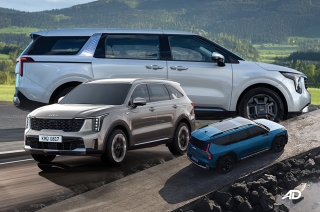
In the vast archipelago of the Philippines, where stunning landscapes and bustling cityscapes coexist, there lies a unique automotive preference that sets it apart from many other countries, especially with automatic and manual transmissions being the most understood terms in the local context. The love for traditional automatic transmissions in the Philippines runs deep, and it continues to thrive despite the emergence of advanced technologies such as dual-clutch transmissions (DCT), continuously variable transmissions (CVT), and automated manuals.
So, let’s unravel the mystery behind this enduring love affair with traditional automatics while exploring the reasons behind the lack of understanding or appreciation for alternative transmission technologies.
Cultural factors

The affinity for traditional automatic transmissions in the Philippines can be traced back to cultural factors deeply ingrained in society. Filipinos value comfort, ease, and convenience, which aligns perfectly with the characteristics offered by traditional automatics. The smooth shifting and effortless operation of these transmissions appeal to the laid-back and relaxed nature of Filipinos, making driving in the country's often congested traffic a more pleasant experience.
Familiarity breeds affection

Traditional automatic transmissions have been prevalent in the Philippines for decades, and familiarity plays a significant role in their enduring popularity. Many Filipinos grew up driving or riding in vehicles equipped with traditional automatics, creating a sense of comfort and—in some cases—nostalgia. This emotional connection leads to a preference for what they know and trust, even in the face of newer, more technologically advanced options. Yes, this also includes the use of terminology.
Reliability and simplicity

Another crucial aspect contributing to the love for traditional automatics is their perceived reliability and simplicity. Traditional automatic transmissions are known for their durability and ease of maintenance. In a country where road conditions can be challenging and access to specialized transmission services may be limited, the robust and proven nature of traditional automatics brings peace of mind to Filipino car owners. Moreover, the simplicity of operation allows drivers of all skill levels to adapt and enjoy the drive.
While yes, CVTs and DCTs nowadays have become more robust in the past ten years, and a lot of Filipinos also value long-term maintenance and cost. Automatics have been proven to be easier to maintain since it has been a transmission that has been available locally for quite some time. This, in turn, allows more shops to service an automatic compared to a CVT, DCT, or an automated manual.
Cost considerations

The affordability factor cannot be overlooked when discussing the preference for traditional automatic transmissions in the Philippines. Historically, vehicles with traditional automatics have been more accessible in terms of pricing compared to those equipped with DCT, CVT, or automated manual transmissions. This accessibility makes traditional automatics a practical choice for a vast majority of Filipino car buyers, leading to their widespread adoption. This also includes some carmakers still equipping a standard automatic transmission on some of their select vehicles even if our neighboring countries already have CVTs equipped.
Limited awareness and understanding

The lack of understanding or appreciation for alternative transmission technologies like DCT, CVT, or automated manual transmissions also plays a role in the continued dominance of traditional automatics. While automotive enthusiasts and technologically inclined individuals may be aware of the advantages offered by these newer options, the general public may lack the knowledge or exposure to comprehend their benefits fully. Without proper education and marketing efforts, the perception of traditional automatics as the default choice remains unchallenged.
Saying the word “matic” is enough for most people to comprehend the transmission type of the vehicle, while saying DCT or CVT could still confuse a lot of people. This is also one of the reasons why a lot of used car ads say automatic transmission, even if it is a different type of transmission altogether.
The enduring love for traditional automatic transmissions in the Philippines is a fascinating phenomenon rooted in cultural factors, familiarity, reliability, simplicity, and cost considerations. The comfort and convenience they offer, coupled with their long-standing presence in the market, have solidified their place in the hearts of Filipino car enthusiasts. To embrace newer transmission technologies like DCT, CVT, or automated manual transmissions, it is essential to bridge the knowledge gap and promote a better understanding of their advantages. Only then can a shift in preferences be expected as Filipinos discover the benefits of these advanced transmission systems without compromising the comfort and convenience they hold dear.
Latest Features
-
An all-electric future: The Porsche Macan Electric / Featured Article
Porsche’s Macan goes all-electric; it’s a new beast with an electrified heart, yet unmistakably Porsche in performance and spirit.
-
Which Kia should I buy? / Featured Article
We’re here to help you decide which Kia vehicle is best for you, whether it’s a sedan, crossover, or minivan.
-
Why Lynk & Co is a good option for luxury car buyers / Featured Article
Lynk & Co offers premium value for those exploring the luxury market.
Popular Articles
-
Electric Vehicles in the Philippines for under P1 million
Jerome Tresvalles · Aug 19, 2025
-
Top 3 Cars For Every Lifestyle—What Cars Are Right For You? | Behind a Desk
Caco Tirona · Apr 24, 2024
-
5 Tips to Maximize Fuel Efficiency
Jerome Tresvalles · Sep 09, 2024
-
Five driving habits that are draining your fuel tank
Jerome Tresvalles · Jun 24, 2025
-
Can engine braking harm your engine?
Jerome Tresvalles · Sep 11, 2025
-
Do electric cars even need maintenance?
Jerome Tresvalles · Oct 23, 2024
-
Best vehicles for an active outdoor lifestyle
Shaynah Miranda · Jul 25, 2024
-
How to drive different types of vehicle transmissions
May 23, 2024
-
5 easy ways to keep your car interior clean
Allysa Mae Zulueta · Nov 15, 2021
-
How to survive Metro Manila traffic
Earl Lee · Aug 16, 2022



